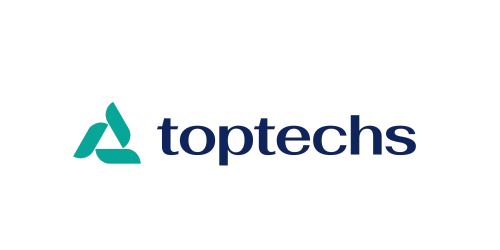How Consistent Communication and Retainers Can Transform Your Client Partnerships

- Introduction: The Power of Communication and Commitment
- Section 1: The Role of Effective Follow-Ups in Client Success
- Section 2: Transitioning from Proposal to Long-term Partnership
- Section 3: Why Retainer Agreements Foster Stronger Client Relationships
- Section 4: Case Studies: Successful Use of Follow-Ups and Retainers
- Conclusion: Transforming Client Partnerships with Consistency and Commitment
- FAQs
Introduction: The Power of Communication and Commitment
In today’s fast-paced digital landscape, building and maintaining strong client relationships is essential for business growth. For small to medium business owners, client relationship managers, and digital marketing professionals, the key to these lasting partnerships lies in two fundamental practices: consistent communication and well-structured retainer agreements. But how do these elements intertwine to create a robust client communication strategy? And what makes them so essential to your success?
Section 1: The Role of Effective Follow-Ups in Client Success
1.1 The Importance of Timely Follow-Ups
In any client relationship, the follow up after a proposal plays a pivotal role. It’s more than just a courteous gesture; it’s an opportunity to reaffirm your commitment to meeting your client’s needs. By maintaining timely follow-ups, you show your clients that their business is a priority for you, thereby laying the groundwork for trust and long-term collaboration.
1.2 Best Practices for Proposal Follow-Ups
Effective follow-ups should be personalized and strategic. Consider scheduling a follow-up call or email within a few days of sending your proposal. During this communication, reinforce the value of your services and address any concerns the client may have. Additionally, setting reminders for periodic check-ins can help keep the client engaged and the conversation moving forward.
Section 2: Transitioning from Proposal to Long-term Partnership
2.1 Moving Beyond the Initial Engagement
Once a proposal is accepted, the next step is to transition the client from a short-term project to a long-term partnership. This shift requires more than just delivering on promises; it involves consistently demonstrating the value of your services and the benefits of an ongoing relationship.
2.2 Establishing Clear Communication Channels
One of the most effective ways to foster this transition is by establishing clear and open communication channels from the start. Regular updates, progress reports, and open lines for feedback ensure that your client feels involved and informed, which is critical for building trust and loyalty.
Section 3: Why Retainer Agreements Foster Stronger Client Relationships
3.1 Understanding Retainer Agreements
A monthly retainer agreement is a contractual arrangement where the client pays a fixed fee for a predetermined set of services each month. This setup not only provides financial predictability for your business but also ensures that your client consistently receives the support they need.
3.2 Benefits of Retainer Agreements
Retainer agreements are advantageous for both parties. For the client, they offer peace of mind knowing that their needs will be met on an ongoing basis. For the service provider, these agreements create a stable revenue stream and encourage long-term planning and resource allocation.
3.3 How Retainers Enhance Client Retention
Retainer agreements naturally lead to higher client retention rates. By committing to a long-term relationship, clients are more likely to view you as a trusted partner rather than just another service provider. This perception strengthens the bond and increases the likelihood of continued collaboration.
Section 4: Case Studies: Successful Use of Follow-Ups and Retainers
4.1 Case Study 1: Digital Marketing Agency
One digital marketing agency saw a significant improvement in client retention after implementing a strategic follow-up process. By using automated email sequences and personalized check-ins, they were able to convert over 70% of their proposals into long-term contracts. Additionally, introducing monthly retainer agreements resulted in a 30% increase in annual revenue.
4.2 Case Study 2: IT Services Provider
An IT services provider successfully transitioned from project-based work to retainer-based agreements by focusing on consistent communication. Regular progress reports and proactive problem-solving initiatives ensured that clients saw the value in a continuous partnership, leading to a 40% increase in client retention over two years.
Conclusion: Transforming Client Partnerships with Consistency and Commitment
Consistency in communication and the strategic use of retainers are not just best practices—they are game-changers in the realm of client relationships. By implementing a robust client communication strategy that includes timely follow-ups and monthly retainer agreements, you can transform casual client interactions into lasting partnerships. Remember, the key to long-term success lies in your ability to commit to your clients as much as you expect them to commit to you.
FAQs
1.What is a client communication strategy?
A client communication strategy is a planned approach to interacting with your clients, ensuring consistent and effective communication to build and maintain strong relationships.
2. How often should I follow up after sending a proposal?
It’s recommended to follow up within 3-5 days after sending a proposal. If you don’t receive a response, consider sending a gentle reminder a week later.
3. What are the advantages of a monthly retainer agreement?
A monthly retainer agreement provides financial predictability, ensures ongoing support for the client, and fosters a long-term partnership between the client and service provider.
4. How do retainer agreements impact client retention?
Retainer agreements increase client retention by creating a continuous service relationship, making clients more likely to stay with the service provider for an extended period.
5. Can small businesses benefit from retainer agreements?
Absolutely! Retainer agreements can provide small businesses with steady revenue and help build long-term relationships with clients, leading to sustained growth.








